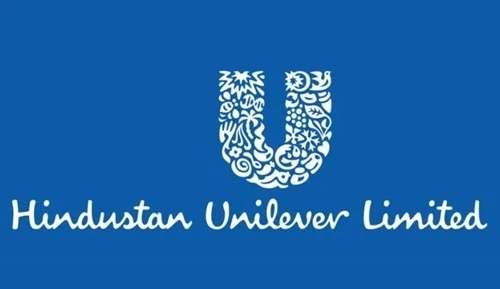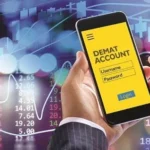Hindustan Unilever Limited (HUL), a subsidiary of the global consumer goods powerhouse Unilever, is not just a brand—it is an essential part of the Indian lifestyle. Whether it’s brushing with Pepsodent, sipping a hot cup of Brooke Bond tea, using Dove in the shower, or cooking with Kissan ketchup, chances are that a typical Indian household interacts with HUL multiple times a day.
In 2025, HUL continues to lead India’s FMCG landscape with agility and innovation. With a market capitalization exceeding ₹7 lakh crore and a distribution network spanning over 9 million retail outlets, HUL remains the largest FMCG company in India. As the country embraces digitization, health-conscious consumption, and rural growth, HUL is strategically transforming itself into a future-ready, purpose-driven organization.
Let’s dive into a comprehensive SWOT analysis—evaluating Strengths, Weaknesses, Opportunities, and Threats—to understand HUL’s current market position and its vision for the years ahead.

Strengths: The Pillars of HUL’s Leadership
1. Diverse and Dominant Brand Portfolio
HUL owns over 50+ household brands, including Surf Excel, Rin, Lifebuoy, Lux, Pond’s, Lakmé, Horlicks, Bru, and Pureit. These brands dominate their respective categories, with many holding #1 or #2 market positions in India.
2. Pan-India Distribution and Supply Chain Network
From urban malls to remote village shops, HUL’s reach is unmatched. Its 9 million+ retail touchpoints and advanced rural penetration make it one of the most accessible brands in India. This scale gives it pricing power and deep consumer insight.
3. Innovation and R&D Capability
Backed by Unilever’s global R&D centers and localized consumer research, HUL continues to launch relevant, need-based innovations—from Ayurvedic skincare under Ayush to immunity-boosting foods under Horlicks and personalized beauty regimens.
4. Purpose-Driven Sustainability Initiatives
HUL’s sustainability goals—aligned with Unilever’s global mission—have led to initiatives such as plastic waste neutrality, water conservation, carbon emission reductions, and sustainable sourcing of key ingredients like tea and palm oil.
5. Strong Financial Performance
In FY 2024–25, HUL posted revenues of ₹62,000+ crore, with strong EBITDA margins and consistent dividend payouts. Its multi-brand strategy and focus on cost-efficiency allow it to maintain profitability even during market slowdowns.
Weaknesses: Internal Gaps That Need Addressing
1. Heavy Dependence on Select Categories
A significant portion of HUL’s revenue still comes from home care and personal care segments. While food and beverages are growing, they currently lag in contribution compared to global peers like Nestlé or ITC.
2. Premium Brand Perception in Rural Markets
Although HUL has rural reach, some of its premium products still face pricing resistance in low-income markets. Competitors offering “value-for-money” alternatives pose challenges in deeper Bharat markets.
3. Slower Growth in Naturals and Ayurvedic Segments
Despite launching brands like Lever Ayush and Indulekha, HUL is yet to match the growth of homegrown Ayurvedic competitors like Patanjali, Dabur, and Himalaya in this fast-growing category.
4. Complex Product Portfolio Management
With dozens of overlapping products and sub-brands, managing cannibalization and ensuring clarity for consumers can be operationally challenging—especially in digital-first marketplaces.
Opportunities: Fueling the Next Phase of Growth
1. Rural Consumption Boom
As rural India becomes more aspirational, connected, and digitally aware, HUL is well-positioned to scale its affordable product offerings. Products in small SKUs (sachets, mini packs) and hygiene categories can find increased demand.
2. Health and Wellness Trend
Post-COVID consumer behavior continues to favor health, immunity, and hygiene. HUL can capitalize further on brands like Horlicks, Boost, and Pureit to tap into this demand, including personalized nutrition products and functional foods.
3. Digital Transformation and E-Commerce Growth
With platforms like Shikhar app for retailers and partnerships with e-commerce giants, HUL is embracing digital commerce aggressively. D2C (direct-to-consumer) models and quick-commerce integrations can unlock new customer segments.
4. Sustainable and Ethical Consumerism
Consumers are now choosing brands that align with their values. HUL’s commitment to recyclable packaging, water-positive factories, and gender diversity can strengthen emotional equity and consumer trust.
5. Premiumization in Urban Markets
As disposable incomes rise, urban consumers are trading up to premium skincare, haircare, and wellness brands. HUL’s success with Dermalogica, Tresemme, and Simple shows its ability to capture high-margin niches.
Threats: External Pressures in a Dynamic Market
1. Intensifying Competition from Local Players
Indian startups and regional brands are rapidly growing in categories like organic skincare, natural foods, and Ayurveda. They are agile, digital-savvy, and often priced competitively—posing a threat to HUL’s traditional dominance.
2. Raw Material Inflation and Supply Chain Costs
Volatile prices of palm oil, tea, dairy, and packaging materials impact margins. Global disruptions and energy costs add to logistical challenges, especially in rural supply chains.
3. Regulatory Scrutiny and Consumer Watchdogs
With increasing consumer activism and food safety laws, brands like HUL are under the lens for product claims, environmental compliance, and advertising ethics. One misstep can quickly become viral and affect brand reputation.
4. Climate Change and Environmental Stress
India is facing increasing water stress and climatic volatility, which can impact raw material availability—especially for agriculture-dependent inputs. HUL’s water stewardship programs will need further scaling.
Conclusion
In 2025, Hindustan Unilever is not just adapting to change—it is shaping it. From health to hygiene, affordability to aspiration, and rural to digital, HUL’s multi-dimensional strategy makes it a leader not just in sales, but in thought and action.
Its ability to evolve with consumer preferences while staying rooted in purpose gives it an unparalleled edge in India’s FMCG sector. As a SWOT analyst and content creator based in India, it’s clear that HUL is not only a business success but a social catalyst, empowering millions of consumers and retailers across the country.
With the right mix of innovation, inclusion, and impact, HUL is set to remain a benchmark for responsible growth and sustainable value creation in India’s consumption story.

Meet Suhas Harshe, a financial advisor committed to assisting people and businesses in confidently understanding and managing the complexities of the financial world. Suhas has shared his knowledge on various topics like business, investment strategies, optimizing taxes, and promoting financial well-being through articles in InvestmentDose.com


